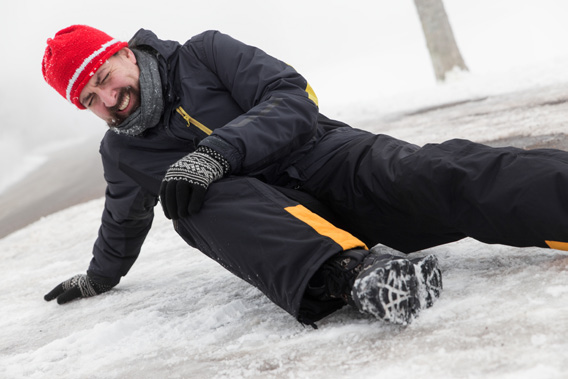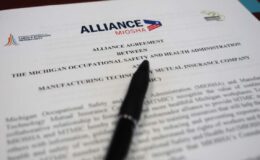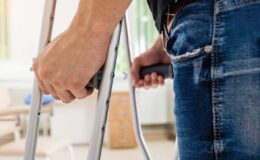By Donna Motley, Vice President of Claims
We’ve had good days and we’ve had bad days – winter weather that is. About a week ago it snowed 6 days out of 7 days – I know, because I had to shovel the snow! The most recent week, we’ve had a couple days of solid rain and it reached 60 degrees. All in February! What does that kind of weather do to a Claims Department that handles accidents and injuries?

Well, we’ve had good days and we’ve had bad days. I don’t think a day has ever gone by where we did not receive a new claim. No accident or injury is “good” – but what we consider a good day in Claims would be, claims of relatively minor injuries: a simple laceration (no sutures), a foreign body in the eye (that is easily removed), a foreign body in the finger (without infection or cellulitis). A bad day in Claims would be the more serious injuries; i.e. fractures, sprains/strains, concussions, amputations, burns, a hospitalization.
This year the weather has played a big part in the injury claims that have been filed: motor vehicle accidents, slips and falls on ice, injuries from shoveling snow or removing ice. A motor vehicle accident does not mean the employee was at fault. With bad weather, an insured’s driver or passenger can be sitting at a light and be hit by another vehicle thereby sustaining injury. (And don’t get me started on the “pot holes”!) A slip and fall in the company parking lot, coming in to work or leaving work can cause serious injury. As well as a slip and fall on a customer’s property. Snow and ice has to be removed from parking lots, and if a contractor is not hired to do it, someone at the company has to shovel, possibly subjecting them to injury.
There are things an employer can do to help avoid these injuries. A parking lot with adequate lighting (in mid-winter if you work 8:00 to 5:00 you travel to work and leave work in the dark); replace burned out light bulbs. Snow removal – if snow is on the ground, you cannot see ice underneath, uneven pavement or holes. If the snow is removed, maybe spread some salt or sand to avoid “black ice”. If you are an employer that has security cameras covering your parking lot or property, make sure the camera is operational, the battery is good, the camera lens is “clear” and the camera is not coated in ice.
In a motor vehicle accident, Workers’ Compensation takes precedent over the auto insurance carrier. Negligence is not a factor when it comes to a work related injury. If you go to a gas station and slip and fall on their property because ice and snow has not been cleared, the law basically states “in Michigan, ice and snow is to be expected (particularly in winter months)”, that the ice and snow is an “open and obvious” hazard, and that the property owner has little to no responsibility for your injury. The opposite is true in Workers’ Compensation – if an employee falls on ice and snow in the parking lot while coming in to work or leaving work, during their regular work hours, even if it is “open and obvious” it is a valid work related injury. It doesn’t matter if they are not wearing proper foot attire and that contributed to the fall.

The first inclination of most people that slip and fall is to stick out their arm to either try and break the fall, catch themselves or grab on to something. This usually results in a fractured hand, wrist or elbow, a torn rotator cuff, an ankle fracture or sprain, a possible torn meniscus or fractured knee cap, a fractured leg or hip, a back injury which can include a herniated disc, and possible concussion if their head hits the ground, as well as a possible cervical strain. That pretty much covers every part of the body. And if they fall up against or on something, they can fracture ribs.
Injuries that occur in the parking lot can increase your total claims count and claims expense, and the employee is not even inside your building or producing product. These injuries include no machinery or tool, and with some effort, may be easy to avoid, thereby increasing your bottom line and saving your employee a lot of pain.






